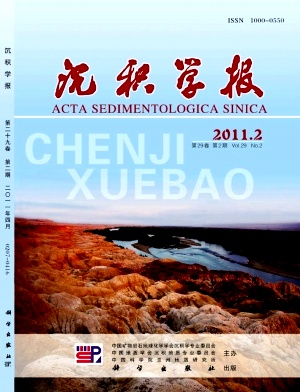Paleoclimatic Significance of Geochemical Elements from Takermohur Desert, Xinjiang since Late Holocene
- Received Date: 1900-01-01
- Rev Recd Date: 1900-01-01
- Publish Date: 2011-04-10
-
Key words:
- Xinjiang /
- Takermohur Desert /
- late Holocene /
- trace element /
- geochemistry /
- paleoclimate
Abstract: Takermohur desert is located in Yili valley of west Xinjiang, which is also situated at semiarid desert geochemical environment in midlatitude westerlies of northern hemisphere. In the center of the desert, we observed a continuously sedimentary profile (with 3.6m outcropped thickness) which is formed with alternative aeolian layers and paleosol layers. On this profile, we collected 72 samples with 5cm equal interval and 3 samples for OSL dating. In the laboratory, we tested 18 trace elements content with Xray fluorescence and grainsize composition with laser particle sizer for all 72 samples. Also, we tested the content of CaCO3 and TOC of all samples. On this basis, we carried out correlation analysis and factor analysis for the content changes and assemblage of trace elements and the ratio of Sr/Ba. According to the different geochemical environment which is indicated by trace element migration with different geochemical properties and the ratio of characteristic elements, we discussed the paleoclimatic characteristics which are recorded by trace element shift and accumulation of different layer in the profile. Based on the OSL time scale, we reconstructed climatic sequence since 3.71 ka BP, which contrast the changes of grainsize composition, CaCO3 and TOC content and refer to the optimal cluster analysis of different parameters. On the whole, the climatic changes of late Holocene in research area could be divided into 5 stages: 3.71~3.06 ka BP, cold and humid; 3.06~2.78 ka BP, warm and arid; 2.78~2.10 ka BP, cool and humid; 2.10~0.50 ka BP ,cold and humid; 0.50 ka BP to present, changed from cold and humid to warm and arid. During the coldhumid climatic period, paleosol developed, and grainsizes of the layer are finer, and amount of CaCO3 and TOC increased. The accumulation of trace element such as Ti、P、Nb et.al which indicates the humid sediment environment increased, and the ratio of Sr/Ba is decreased. During the warmarid climatic period, aeolian layers developed, grain sizes are coarse, amount of CaCO3 and TOC at a relative low, and accumulation of Sr et al, which shows the arid environment increased, so the ratio of Sr/Ba is increased. In general, there has been a climatic aridification tendency in the region since late Holocene. And the paleoclimate characteristics alternating by arid and humid and climatic change stages were similar between the study area and other regions in northern Xinjiang. At centennial scales, the climatic change has teleconnection with that of north Atlantic, which is located in the upper wind of midhigh latitude westerlies. It may suggests that the climatic change of northern Atlantic regions as well as the global climate change is one of the most important driving factor for the climatic change of the study area since late Holocene. The climate change model of the study area indicated by assemblage and variation of trace elements is different from the monsoon zones in east China. It is reflected that there are regional difference refer to the process of trace element migration at supergene geochemical environment under the influence of global climate change.
| Citation: | JIN Jianhui. Paleoclimatic Significance of Geochemical Elements from Takermohur Desert, Xinjiang since Late Holocene[J]. Acta Sedimentologica Sinica, 2011, 29(2): 336-345. |






 DownLoad:
DownLoad: